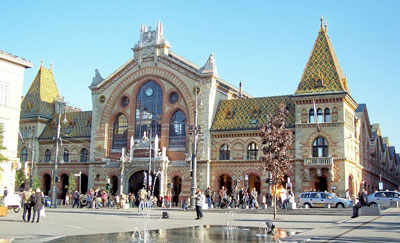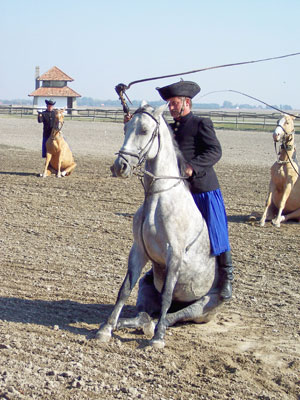Eastern Europe Danube cruise
This item appears on page 63 of the April 2012 issue.
(First of three parts)
And a time of peace and plenty prevailed over the realm. . . .
At least, the peace part seems to be in place in the Danube region of Eastern Europe which I experienced in October 2011 on the 13-day “Eastern Europe to the Black Sea” cruise, hosted by what on Jan. 27, 2012, would become known as Grand Circle Cruise Line.
Our Danube journey commenced with an exploration of Budapest, where passengers boarded M/S River Adagio, our comfortable, 146-passenger cruising vessel and floating home. After three days of touring and self-guided exploration in the picturesque Hungarian capital city, we hoisted anchor and leisurely began meandering downstream toward the Black Sea, passing through Hungary, Croatia, Serbia, Bulgaria and, finally, Romania.
Budapest delights
Our introductory coach tour of scenic, hilly Buda, on the western side of the Danube, featured historic Castle Hill, with its Royal Palace and the beautiful 13th-century Matthias Church, before we traversed the Danube to bustling Pest, the business and commercial center of the city.
In Pest, our viewing included the massive Parliament Building, Heroes’ Square, giant City Market, the Jewish Synagogue and staggering St. Stephen’s Basilica, which was constructed in stages between 1851 and 1905. Walking excursions in both Buda and Pest helped provide an excellent primer for my self-guided touring over the next few days.
Prowling Budapest solo
Forgoing the offered optional tours of Budapest, I had the luxury of extra free time for exploring the city on my own from our ship, which was centrally and conveniently docked on the Pest side of the Danube near the massive Parliament building.
My solo roaming included visiting the stately Museum of Fine Arts, climbing alluring Gellért Hill for Buda’s best photo ops and investigating some of the enticing hilly residential areas of Buda on foot.
Also, I had thorough exposure to the huge, indoor and seemingly timeless City Market, where I marveled at the colorful and aromatic displays of Hungarian meats and cheeses and learned more than I shall ever need to know about paprika.
Public transport in Budapest was very inexpensive and user friendly, especially the clean, safe and efficient underground, with the closest station to our dock being about a 10-minute walk away.
Most museums and many other venues are closed on Monday, a circumstance that, unfortunately, prevented me from attending an opera at the magnificent opera house. I needed to have planned more precisely.
Thermal spa bliss
Citizens of Budapest have, for centuries, enjoyed the benefits of the mineral-rich hot springs which bubble up to the surface through fractures in the underground rock.
There are more than 30 mineral bath and pool facilities open to the public, some year-round. Many offer not only relaxing hot mineral pools with healing properties but a range of spa and medical/healing services.
I made it a priority to visit two of the most historic, famed and popular facilities, the Gellért Hotel-and-baths complex and the Szechenyi Baths, both of which are open year-round and are easily accessed by public transport. The relaxation quotient was so engulfing at both baths that parting was not sweet and it induced sorrow.
Gellért Baths is attached to the historic Gellért Hotel, on the Buda side of the Danube, and is known for its lavish, marble-column-lined indoor pool, its charming outdoor pools and a full range of spa services. Admission to the baths for all pools and a locker costs approximately $18.
Szechenyi Baths is the largest bathing complex in Europe, has the hottest pools in the city and is very popular with both locals and visitors. Its springs, which were discovered in 1876, rise to the surface from a depth of 3,180 feet. Admission to the pools plus a locker cost approximately $17. Szechenyi is located in Varosliget, or City Park, in Pest.
Our evening departure from Budapest was savored by most passengers, top deck, as the enthralling lights of the Parliament, Castle Hill and the numerous Danube bridges seemed to herald our farewell.
Horsing around in Kalocsa
After cruising through the night, we docked in the morning in Kalocsa, which is known as the paprika center of Hungary. I decided to go on the optional tour “Traditions of the Hungarian Countryside” ($85), which visited a local church for an organ recital and then an informative paprika museum.
We then journeyed to Bakodpuszta, a horse farm, for an exciting show featuring highly skilled csikós (think trick riding cowboys) and their magnificent steeds performing an amazing array of complex riding maneuvers and stunts.
Back on board in the afternoon, we cruised leisurely downriver toward Croatia and beyond. I will report on that in next month’s column.
Before you cruise…
For information on Eastern Europe Danube and other European river cruises, contact Grand Circle Cruise Line (317 Congress St., Boston, MA 02210; 800/221-2610), which operates its own fleet and offers an extensive range of air/cruise packages,
In 2012, the 13-day program costs $2,695-$3,895 per person, double occupancy, including international air from New York, New York (JFK), and Newark, New Jersey. The single supplement is $595.
Singles should be aware that there are only four single cabins on the ship and, typically, they sell out quickly. Grand Circle Cruise Line has a guaranteed-roommate program for single travelers who wish to avoid paying a single supplement.
Pre- and post-cruise extensions for Prague and Transylvania are available.
For information on Budapest and other destinations in Hungary, contact www.hungary.com and www.gotohungary.com.
Keck's Beyond the Garden Wall
❝The blissful surrender of self
to the healing elixirs from the depths,
time and thought ceasing,
lost to liquid divinity ❞
— Randy describing “soak surrender” in the hot mineral pools of Budapest


